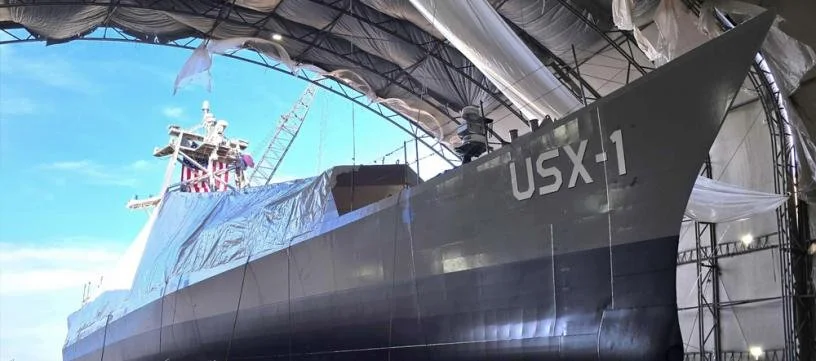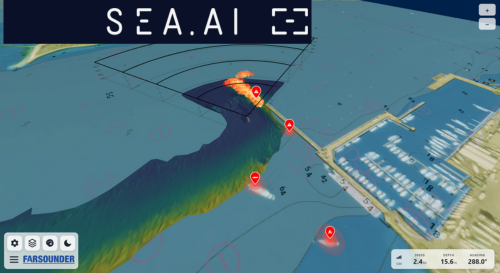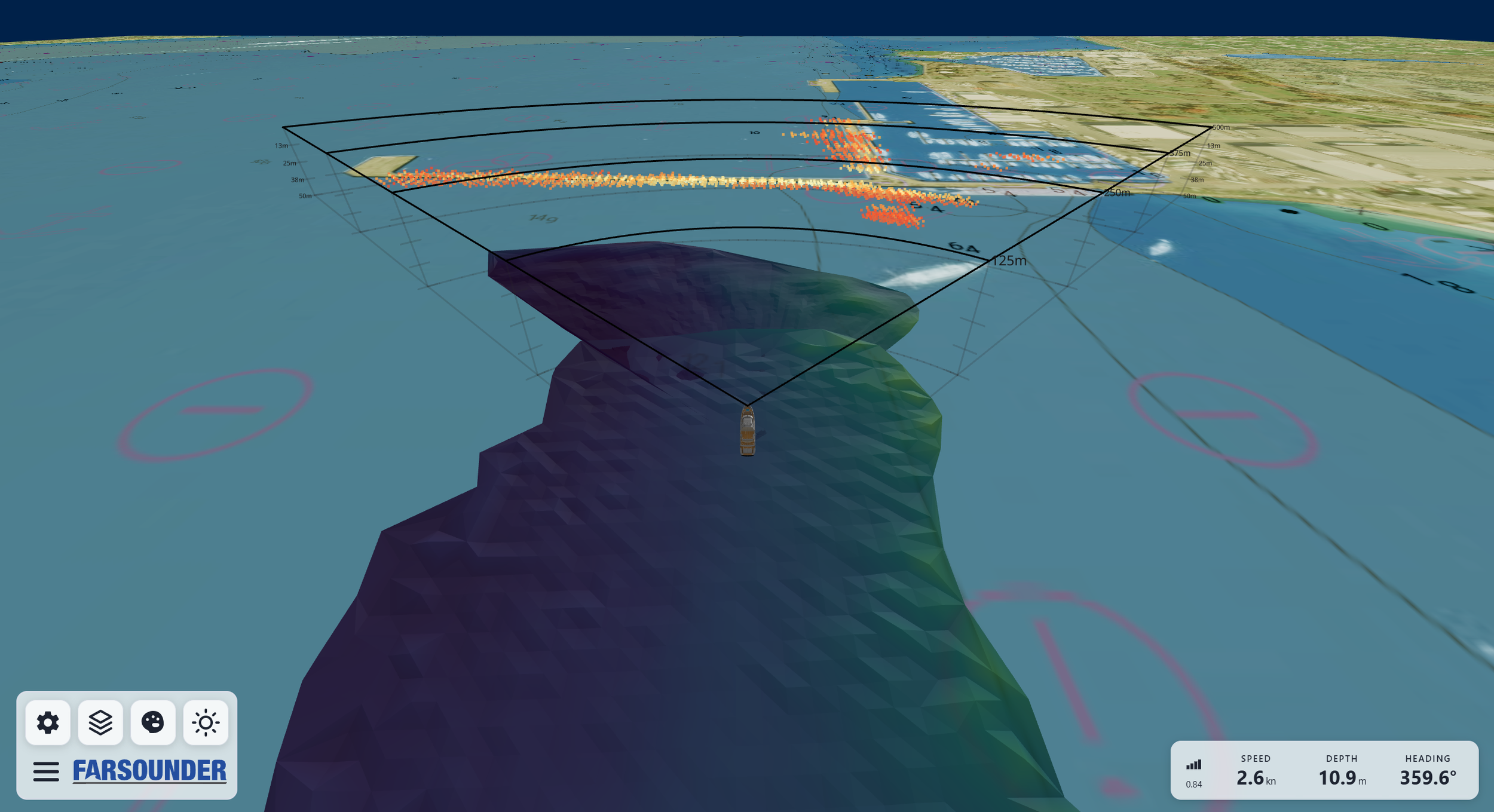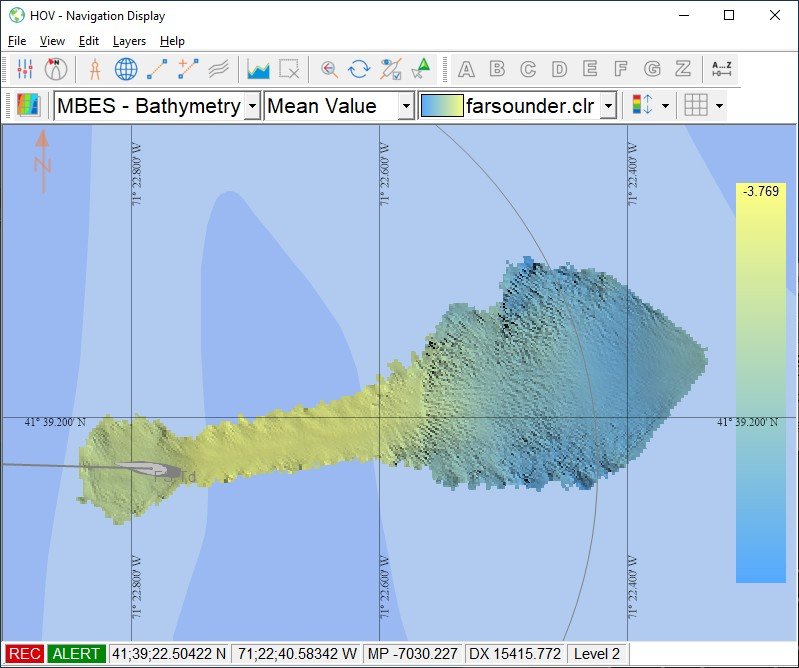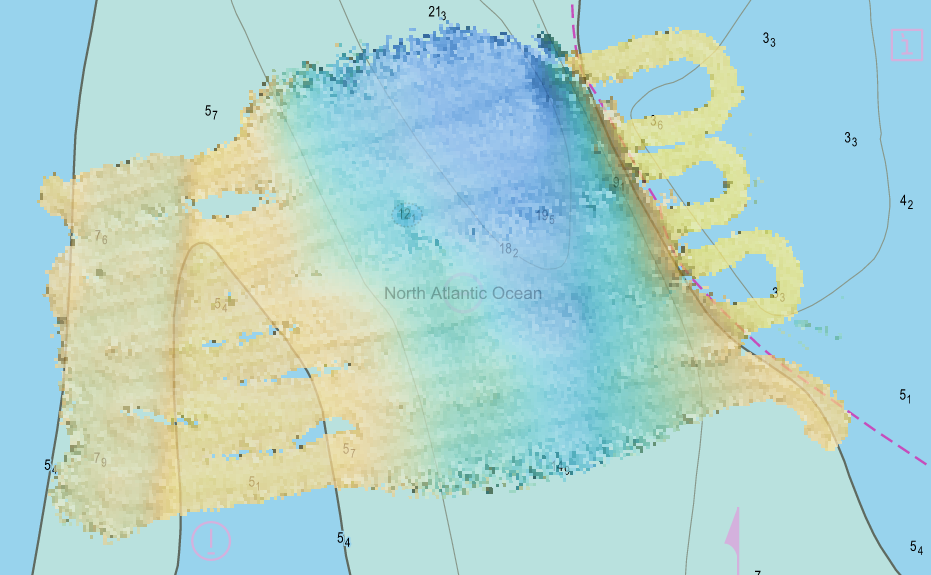3D FLS Enabling The Future of Unmanned Defense Operations
Unmanned and autonomous systems are rapidly reshaping naval operations, making the move from experimental to essential. The next era of naval superiority will hinge on how effectively these platforms integrate within broader fleet operations, and on the sensor technologies that empower them to perceive, decide, and act independently across diverse maritime environments.
Situational awareness remains fundamental to every unmanned, minimally crewed, and autonomous vessel. To achieve it, modern systems rely on a network of complementary sensors that translate environmental data into actionable intelligence. While above-water sensors such as radar, EO/IR, and machine vision systems provide valuable surface-level coverage, the underwater domain remains a challenge. Navigation hazards, poorly charted waters, and the need for reliable autonomy present real risks, especially when vessels are expected to operate with minimal human oversight under low-bandwidth communications. In the context of naval operations, enhancing the effectiveness and value of unmanned vessels requires equipment that can expand capabilities beyond situational awareness alone.
DARPA’s NOMARS demonstration vessel “Defiant” Source: Serco North America
Expanding Operational Capability
Argos series sonars are already in the naval theater on both manned vessels and unmanned platforms including DARPA’s NOMARS USV. These sonars provide a real-time view of the underwater environment ahead of a vessel out to 1000m while also building a map of the sea floor everywhere it goes. For unmanned operations, this capability extends well beyond navigation safety. It establishes a persistent and evolving layer of environmental intelligence, a resource that can be shared across hybrid fleets, enhancing collective mission awareness and enabling more informed command decisions.
Argos 3D Forward-Looking Sonars support the full spectrum of minimally crewed and unmanned surface vessel (USV) operations, from human-in-the-loop operations to fully autonomous navigation.
Remote Operator Support: In most cases, a human-in-the-loop display is an added value that allows operators a complete visual understanding of what the system “sees” ahead of the vessel.
Autonomous Control: Fully processed sonar data can be delivered through an Ethernet-based machine interface, giving vehicle control systems the information needed to make intelligent navigation decisions and real-time course corrections.
Local History Mapping™: Argos sonars take the real-time information the vessel has gathered and generate a depth map of everywhere the vehicle has been. Bathymetric data collected by the system is recalled when a vessel returns to a previous location and can also be securely shared across a fleet.
Domain Awareness
USVs increasingly serve as distributed sensors that extend the fleet’s operational horizon. When deployed ahead or to the flanks of manned vessels, these platforms contribute to a layered domain awareness network. Fused sensor data from multiple USVs provides early indications of enemy activity, allowing command units additional time and space to react.
Incorporating 3D Forward-Looking Sonar enhances this network by filling the underwater information gap. Real-time detection of subsurface obstacles and mapping of the seafloor contribute to both navigational safety and tactical awareness. By continuously collecting bathymetric intelligence, fleets can optimize routing, improve operational tempo, and even infer adversary movement based on environmental data.
Intelligence, Surveillance, and Reconnaissance (ISR)
For ISR missions, unmanned and autonomous assets equipped with Argos 3D FLS significantly broaden the scope of actionable intelligence. These platforms can patrol or monitor designated areas while manned vessels focus on higher-priority objectives, allowing simultaneous mission execution. By incorporating real-time subsurface awareness, 3D FLS systems enhance ISR coverage to include underwater anomalies, aiding in the detection of submerged threats, underwater infrastructure, or environmental changes relevant to mission success.
Integration Within Multi-Sensor Ecosystems
Argos FLS data integrated into Anschütz SYNAPSIS (W)ECDIS NX Interface
Having technology that integrates easily on the software level helps make intelligence more accessible, aiding with fast, more informed decision making. FarSounder Argos sonars easily integrate AIS and ARPA targets as well as camera systems like SEA.AI giving vessels and operators easier access to information about their operating environment. These types of integrations also provide autonomous vessels with better intelligence to conduct missions and navigate effectively.
SonaSoft LT™ UI displaying above water detections through SEA.AI Integration
Integration extends beyond the vessel itself. FarSounder’s SonaSoft™ software facilitates seamless incorporation of sonar data into (W)ECDIS and other situational-awareness platforms through our Software Development Kit (SDK). This enables real-time and historical bathymetric data to be distributed across command networks, contributing to the broader maritime data ecosystem. The value of integration onboard USVs for intelligent navigation, along with the ability to feed collected data into broader systems, provides naval leadership with the situational depth needed to coordinate complex operations with greater precision.
Operations in Uncharted Waters
Naval missions often extend into poorly charted or uncharted regions, where environmental uncertainty poses both navigational and tactical challenges. Deploying USVs equipped with Argos 3D FLS enables reconnaissance and mapping of these waters without exposing crewed assets to unnecessary risk.
Argos sonars map the underwater environment out to at least 8 times the depth below the sensor. Operating in water with a 50m depth can yield a full view of the seafloor out to 400m ahead of the USV. This ability allows for faster mapping compared to a down-facing sonar that can only receive seafloor data from directly below the vessel. By aggregating bathymetric data from multiple USVs, commanders can quickly develop a detailed understanding of terrain features, safe passages, and potential choke points. This data offers improved navigational safety and mission planning while supporting the establishment of supply routes and even safe ship-to-shore passage for amphibious landing operations.
Mine Countermeasures (MCM)
Traditional minehunting vessels often deploy towed sensor arrays, such as towfish equipped with side-scan sonar and other mine-detection payloads, to identify and classify underwater threats. The inherent risk involved with this type of mission has made USVs an ideal asset to assist or replace manned MCM vessels. While highly effective, towing expensive and mission critical equipment below the surface introduces additional operational challenges.
Any sudden navigation change or unexpected underwater terrain feature can place the towfish at risk, potentially leading to sensor damage or mission disruption. A USV equipped with an Argos 3D FLS would be able to assess the underwater environment out to navigationally significant ranges ahead of its position. Remote operators or autonomous control systems can use this data to identify underwater features that are harmless to the vessel but hazardous to the towed sensor array, allowing sufficient time to adjust course or towfish depth to avoid collision.
Supporting the Hybrid Fleet
As defense organizations continue to adopt hybrid fleets that blend manned, unmanned, and autonomous systems, technologies like 3D forward looking sonar play a critical role in shaping operational success. Argos sonars extend beyond real-time navigation to become integral components of a larger information architecture, supporting machine autonomy, fleet-wide intelligence sharing, and strategic decision making.
Being able to provide valuable subsurface intelligence to autonomous control systems, remote operators, and integrate into broader maritime awareness platforms, this technology serves as a true force multiplier. From domain awareness, ISR operations, and charting unknown waters, Argos 3D FLS significantly enhances the potential for unmanned operations within the modern hybrid fleet.

